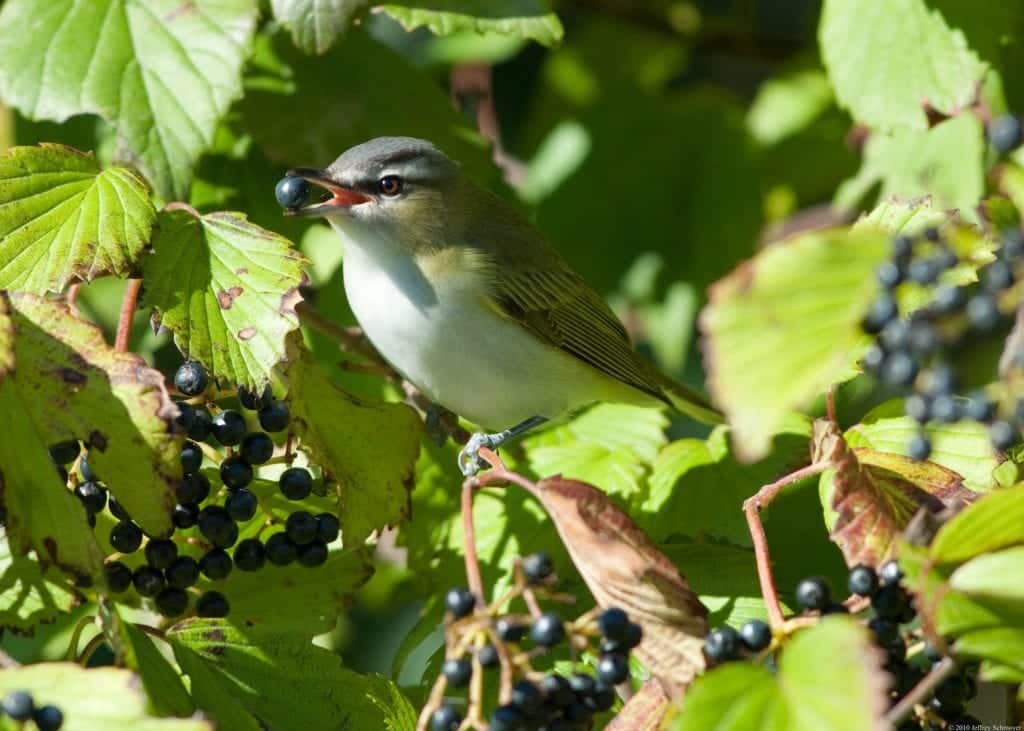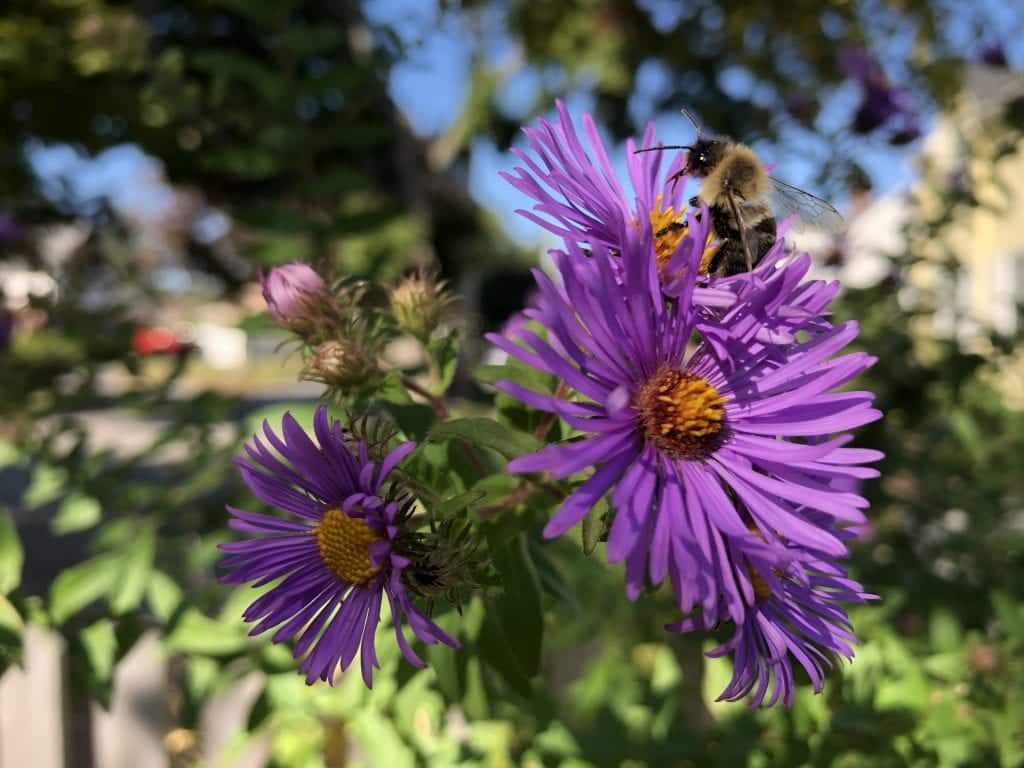
Fall is in the air and news. A couple of crisp mornings, the first foliage maps, and migrating birds all spell the final weeks and months of what has largely been a great growing season. However, it’s not over yet! In fact, judging by the blooms, berries, and wildlife we’re seeing around us, one can’t help feeling like many backyard habitats are still at their peak.
Late bloomers, berries, and seeds
In places we have managed with late summer color and ecology in mind, we are rewarded with late blooms from Goldenrod, Aster, Helianthus, turtlehead, and Lobelia, all in full bloom now. Long-bloomers like Rudbeckia, Heliopsis, and Coreopsis also help keep September summer. The nectar these flowers are still producing is critical for species such as Ruby-throated Hummingbirds, Monarchs, and Painted Ladies that are just getting ready to migrate.
Meanwhile, plants that bloomed earlier this summer have formed berries and seeds that are critical for supporting animals also loading up for long migrations or cold winters. Viburnum, Cornus, and Aronia are beautiful native flowering shrub genera whose leaves and blooms support countless insects, but their berries also feed birds and mammals during this very important season.
Even if you are now regretting not having a landscape still in full bloom heading into October, remember the huge value of flowers that have faded and gone to seed. Those “deadheads,” as well as some very busy bird feeders, remind us of the critical role seeds play for birds, mammals, and the ecosystems they are part of this time of year. Whether they are getting ready to fly thousands of miles, hibernate or enter dormancy, or set up winter caches of food, many animals depend on seeds being abundant in the fall. Put down those pruners and leaf bags, and fill those bird feeders!
What you can do at home
Plant late-blooming native plants! Fall is a great time to plant, and Maine Audubon still has many plants for sale at our Falmouth location. Wetland flowers like Lobelia and turtlehead grow well in store-bought soils that retain moisture, low spots, and gardens that get watered. For drier sites where many of the common dry meadow genera (like Asclepias, Solidago, etc.) get a bad rap for particular species that spread aggressively, Maine Audubon has chosen species that won’t do that.
We still sell the following species while supplies last at the Gilsland Farm Nature Store:
Swamp milkweed – Asclepias incarnata – beautiful, non-spreading Monarch host. This is not the milkweed you see on highways, but is just as critical to Monarchs.
Wild Bee Balm – Monarda fistulosa – midsummer (just passing now) magnet for hummingbirds, bumblebees, and butterflies.
Joe Pye Weed – Eupatorium maculatum – hardy, tall, beacons of pink flowers are butterfly favorite.
Early Goldenrod – Solidago juncea – this tall, few-stemmed, July bloomer will blend in well with other tall plants in a bed or field.
Blue-stemmed Goldenrod – Solidago caesia – this is a dainty woodland goldenrod that prefers some shade and cover in which to hide.
Zigzag Goldenrod – Solidago flexicaulus – this is a smaller, broad-leaved, sturdy goldenrod that won’t take over a site.
Smooth Blue Aster – Symphyotrichum laeve – beautiful and striking tall flower, late bloomer.
New England Aster – Symphyotrichum novae-angliae – the Tom Brady of wildflowers, this plant used to dominate New England fields and meadows.
Turtlehead – Chelone glabra – late blooming lowlands plant is excellent nectar source for hummers starting to think about migrating, and hugely entertaining to watch bumblebees on.
Foxglove Beardtongue – Penstemon digitalis – early blooming (June) favorite of hummingbirds and bumblebees.
Cardinal Flower – Lobelia cardinalis – hummingbird favorite for wet, sunny locations.
Great Blue Lobelia – Lobelia siphilitica – this is a great Lobelia, and is endangered in Maine.
The Nature Store is open Monday – Saturday, 10 am-4 pm, and Sunday 12-4 pm.

